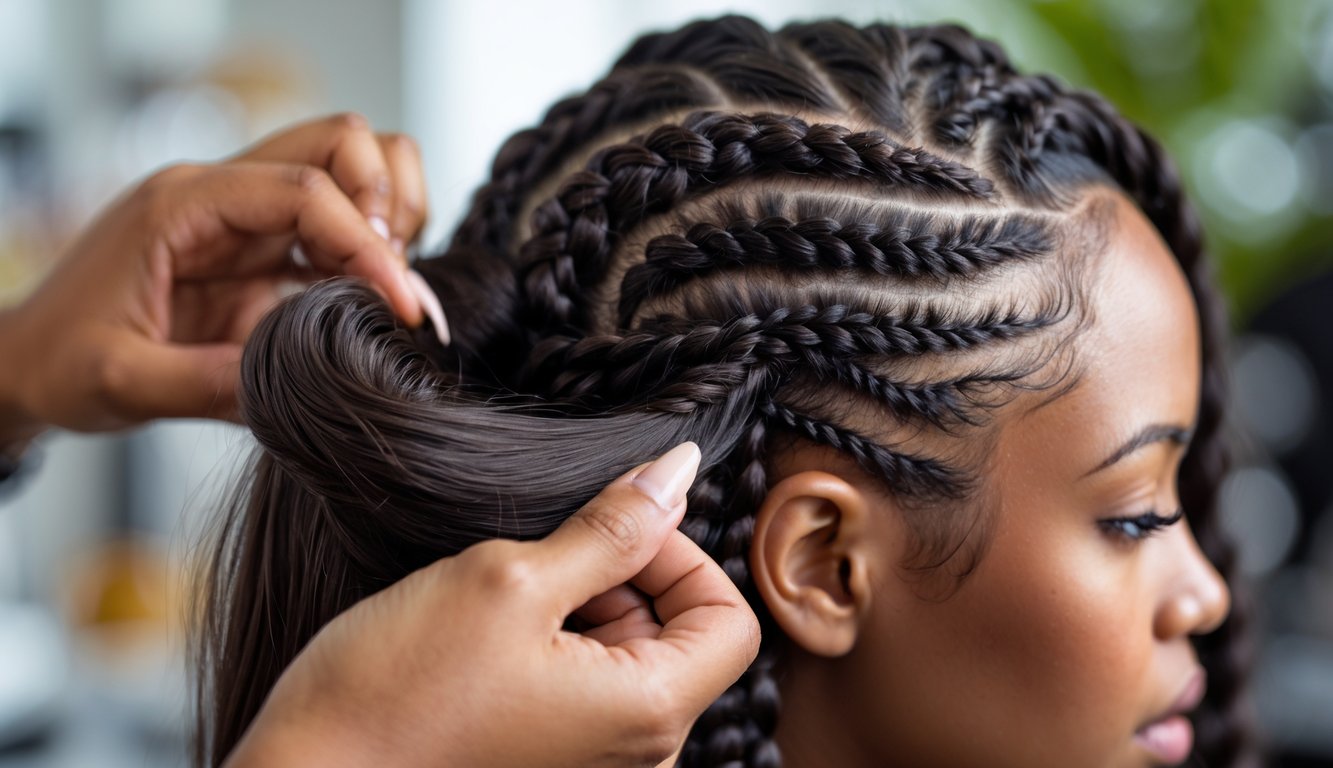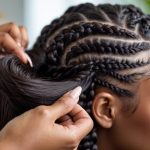
Maintaining Hair and Scalp Health With Braids
So, last week in the stylist’s chair, I kept thinking about how every scalp care “hack” on Instagram is just… not real life. Stylists online act like maintenance is easy, but then you show up and they’re skipping half the steps—or just ignoring product residue that’s hiding under those neat parts. I don’t get it.
Routine Maintenance Practices
First thing I do with braids—knotless, cornrows, whatever—is ignore every influencer who says “just rinse!” and use a real clarifying shampoo. Not the discount stuff. Tracy Brown (trichologist, apparently everywhere but never seen her in person) says to detox your scalp first, and my stylist mumbled agreement, so I go with it. Prep, wash, pat dry—no debate.
Used to think “protective style” meant hands-off for weeks. Joke’s on me: my scalp would itch like crazy. Now I literally put “wash scalp” in my calendar, because sweat and product sneak in fast and breakage is just waiting for me. I swap to satin pillowcases, supposedly to avoid breakage, but really it’s because cotton makes my hair frizzy and weird. Outgrowth is easier, too, which is nice.
Moisturizing and Product Use
It’s wild how many people just stop caring about their scalp once braids go in. Moisturizer isn’t just oil, and if you’re still using heavy shea butter, good luck with clogged roots. Water-based sprays are the only thing that keeps my scalp happy. Anti-itch sprays? Most are sticky nonsense. I mix tea tree oil or aloe juice in a mister and it actually helps.
Some folks swear by pre-washed, hypoallergenic braiding hair—it’s supposed to reduce reactions, and I started getting rashes from synthetic packs last year, so now I’m picky. Ingredients matter. If my scalp burns or I see a rash, the braids are coming out, no matter how cute they looked in photos.
Signs of Hair Breakage and How to Respond
Breakage is sneaky. One day the nape looks fuzzy, next day I’m pulling broken hair off my hoodie. Three hair experts in some guide said shedding and thinning edges are never “normal.” I used to ignore the little snaps and soreness, but now any frizz, soreness, or clumps in the drain means the braids are out, no arguments. My stylist says to loosen new growth with fingers, not a comb, and avoid tight styles for a couple washes. Sometimes I switch to scalp massages or a protein treatment—can’t believe it actually helped, but my last breakage patch grew back after I ditched heavy gels. Should’ve done it sooner.
Trending Braiding Styles for Healthy Growth
I keep hearing “protective” tossed around everywhere, but some of these styles are just breakage in disguise—Fulani, box braids, whatever’s trending. The only thing that actually matters is less tension and smarter sectioning, at least if you listen to trichologists with podcasts. It’s the technique, not the trend, that saves your edges.
The Rise of Fulani Braids and Cornrow Bun
Every time I do Fulani braids on fine hair, I hold my breath—edges are fragile and these feed-ins barely tug, which feels like cheating compared to the scalp-yanking cornrows I learned in beauty school. I swapped out the beads for silicone ones because, honestly, who wants bruised scalps every week?
Clients keep asking for cornrow buns now, but only if they’re low-tension and arc instead of digging angry trenches. Dermatologist Tiffany Lin, MD, keeps repeating, “Distribution of weight matters more than style,” but nobody on Instagram cares. And frizz? I use anti-frizz serum and a crochet hook—yep, a real one—to tuck in wild ends so clients leave looking decent, not like they fought a hedge.
French, Dutch, and Waterfall Braids
French braids are supposed to be gentle, but last year my hair snapped right at the part from over-braiding, even though I wasted money on Olaplex. Dutch braids—reverse tension, which just means fatter plaits hiding random knots. My friend Chloe, who teaches waterfall braids, swears mousse is the only way to keep fingers from slipping.
No one talks about how humidity and scalp pH mess up waterfall braids, but magazines act like it’s all “ethereal romance.” I switch up the starting side every time, and weirdly, my clients’ sides don’t thin out that way. Also, Dutch braids aren’t boxer braids—boxer is just a made-up marketing thing.
Micro Braids and Fishtail Braids Explained
Micro braids only survive if people actually come back for maintenance, but good luck getting anyone in before six weeks—split ends love that. Giselle Carter (stylist, New York, answers DMs at 3am, not kidding) says day-four buildup acts like dry shampoo for micro braids. Is that gross? Maybe, but, well, science.
Fishtail braids look easy on Pinterest, but your arms will hate you. If the sections aren’t even, I swear my hair grows back with weird kinks, or maybe that’s just me. I use castor oil on the ends, seals better than any fancy spray, and clients barely see splits at take-down. In summer, I tell people to go looser on the crown—nobody believes it helps regrowth, but it does.



